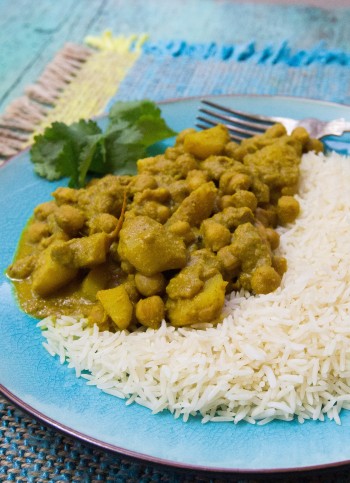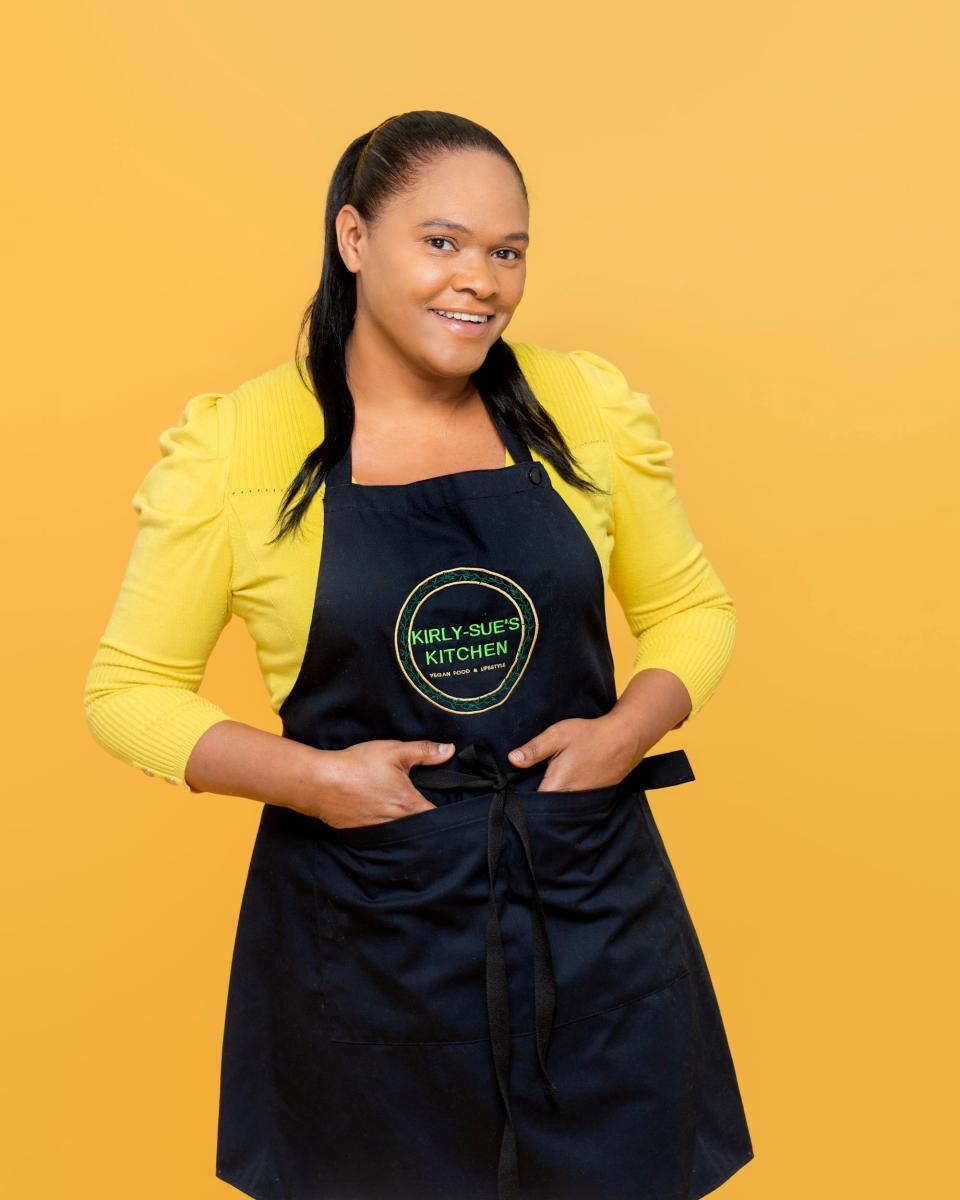Vegan chef, Susanne Kirlew, shares her tips to get started with plant-based Caribbean cooking.
I have always loved Caribbean food. I was born and raised in England and my parents are from Jamaica. My parents raised my sisters and me on both Caribbean and British food. So I could typically have ackee and dumplings for breakfast at home and then go to school and have jacket potato and beans for lunch. The cuisine of the Caribbean has a strong influence from African, Indian/South Asian, Creole, Cajun, Middle Eastern and Chinese food.
History
Historically people have come from different parts of the world to the Caribbean bringing their food traditions and flavours with them. Some of the dishes were created out of circumstance and necessity because most people in the Caribbean are descendants of people who were forced to leave Africa, transported in inhumane conditions by ship to the Caribbean and were enslaved for hundreds of years. Slavery was abolished circa 1838 and that’s when the indentured labourers came from India to the Caribbean. They brought with them their spices and their dishes, and this has led to the combination of flavours, textures and tastes that today makes Caribbean food the concentrated essence of a flavour explosion on your tongue that it is today.
Ital
Caribbean food has always included good vegan options. In Jamaica it is traditionally called Ital (pronounced eye-tal) food and was made popular by the Rastafarian movement. Rastafari (as it is commonly known) is a religious and political movement that began in Jamaica in the 1930s and has since been adopted by many groups across the globe. It is a combination of Protestant Christianity, mysticism, and a pan-African political consciousness.
Ital food is a specific type of vegan food, it is food that is natural, or pure, and comes directly from the earth; Rastas avoid food which is chemically modified or contains artificial additives. Therefore they only have a wholefood plant-based diet.
Seasoning
What makes Caribbean cooking super delicious and unique are the seasonings, herbs and spices used to cook the dishes.
the dishes.
Some of the most popular seasonings, herbs and spices used in the Caribbean are:
- Thyme
- Cumin
- Allspice
- Red pepper
- Cinnamon
- Nutmeg
- Ginger
- Turmeric
- Cloves
- Star anise
- Black pepper
- Cayenne pepper
- Paprika
I have to mention one of the most popular seasonings in the Caribbean and that is jerk seasoning. Jerk seasoning is deeply entwined into Caribbean history and that is Jamaican history to be precise and can be traced back hundreds of years. Basically it is a spice mix used to marinate and add flavour. Staying true to Jamaican heritage, meat was originally given the jerk treatment but has now become popular in vegan dishes like pulled jackfruit and jerk tofu. These can be served with another Caribbean classic, rice and peas, which is rice cooked with kidney beans (kidney beans are called peas in the Caribbean).
Top Tips
Some tips for getting started with Caribbean vegan cooking are as follows:
- Always (where possible) use fresh ingredients. Fresh vegetables, fruits and herbs always give a fuller flavour.
- Caribbean food can be tasty without have a strong peppery taste, so if you use a scotch bonnet pepper when cooking Caribbean food, as long as you do not cut it open it will give great flavour and little to no heat.
- All purpose seasoning is an essential ingredient in Caribbean cooking and an essential kitchen cupboard staple ingredient to all who cook Caribbean food. All purpose seasoning is actually a spice blend and is widely used within the Caribbean community because it’s so diverse and can be used to enrich the flavour of almost any savoury dish.
- Coconut milk is a great way to add a rich creamy taste to Caribbean food. If you don’t have any coconut milk, you can add coconut cream (or creamed coconut as it is called in some countries) In addition you can easily make your own coconut milk by grating a fresh coconut and blending with warm water. Strain to remove the coconut pulp and add to curries, stews and more of your favourite Caribbean dishes.
- Fresh herbs are commonly used in Caribbean cooking on many islands. The herbs that are most often used are thyme and coriander (cilantro). Add a sprig of fresh thyme to rice and peas to bring out the flavour of the peas or add it to soups and stews with a little scotch bonnet pepper.

Kirly-Sue (aka Susanne Kirlew) is a vegan Chef, an award winning published author & TV presenter. Connect with her for more vegan recipes and info on Instagram & YouTube.
www.instagram.com/kirlysueskitchen
www.youtube.com/KirlySuesKitchen
The views expressed by our bloggers are not necessarily the views of The Vegan Society.

